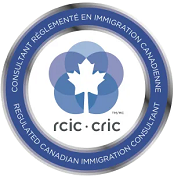Canada will target 400,000 immigrants a year
Canada aims to welcome 401,000 migrants by 2021, 411,000 by 2022 and 421,000 by 2023. Canada announced its 2021-2023 Immigration Plan.
Today, Canada announced its 2021-2023 Immigration Levels Plan. Canada will target the highest immigration in its history.
Over the next three years, Canada aims to welcome the following new permanent residents:
- 2021: 401,000 immigrants
- 2022: 411,000 immigrants
- 2023: 421,000 immigrants
Canada welcomes more than 400,000 immigrants a year In 1913, 401,000 new entrants were admitted. It never came close to this figure again.
The 2021-2023 Immigration Levels Plan aims to welcome 60 percent of immigrants under economic class programs, including the Express Entry and Provincial Nominee Program.
The Immigration Levels Plan is the most important immigration notice issued by the Government of Canada each year. It outlines the number of new permanent residents that Canada aims to welcome in the years to come, and which categories Canada intends to accept them under. Canada welcomes immigrants under the following categories: Economy; Family; refugee; and on humanitarian and compassionate grounds.
Earlier this year, on March 12, Canada announced that it aimed to welcome more than one million new permanent residents between 2020 and 2022. A few days later, Canada had to close its borders due to the COVID-19 pandemic.
As a result, Canada will be much lower than the 341,000 immigration target set for this year, however it holds express entry tracks throughout the epidemic, with the result that Canada will surpass this year’s express entry record. In addition, the Provincial Nominee Program (PNP) tracks are ongoing.
To make up for the decline in immigration this year, Canada has set the most ambitious immigration status plan in its history.
Why Canada maintains high immigration
Canada is maintaining a high level of immigration to offset the negative economic and financial impacts of its aging population and low birth rate.
Canada has one of the oldest populations in the world, with nearly 18 percent of its population aged 65 and over. This is one of the lowest birth rates in the world at 1.47 births per woman. Therefore, Canada will face challenges in growing its economy and supporting government spending in the future. These challenges can be mitigated by welcoming more immigrants to support labor force and economic growth.
Since its founding in 1867, Canada has welcomed at least 300,000 immigrants five times a year. It currently welcomes 0.9 percent of its population of immigrants, more than three times the personal newcomer intake in the United States.
At the same time, Canada has had a high individual intake in the past, welcoming 1 percent or more of its population into newcomers, which continued to reach decades before the First World War.
When Canada’s immigration register welcomed 401,000 immigrants in 1913, more than 5 percent of its population welcomed newcomers. Today, 5 million new immigrants make up 2 million new immigrants to Canada.
Canadian immigration during COVID-19
As enrollment targets grow, Canada is experiencing a decline in the number of new permanent landings in the country by 2020. The number of new permanent residents admitted in August is 64 percent lower than in August 2019. This is partly due to travel restrictions and other restrictions related to the corona virus of persons who have been granted permanent residency before the expiration of their immigration documents, but are unable to travel to Canada.
Public support for immigration to Canada has increased during epidemics, an environmental agency study says. With a difference of five to one, Canadians report that immigration makes Canada a better country, and they are more likely to say this because it makes for a very diverse and multi-cultural place to live. In another study by the Canadian Studies Association, Canadians generally view immigration as favorable for long-term economic recovery, but want to see family members prioritize immigration.



